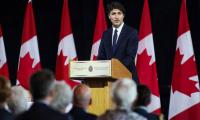LAHORE: Although most provincial Governors in Pakistan have largely been ceremonial however, when it comes to their jurisdictions and functioning ambits, the powers of these provincial heads on paper were hugely increased throughout the country’s turbulent political history
Historically, whenever the provincial assemblies were dissolved and the administrative role came under their direct control, as it happened during the Martial Laws of 1958-1972 and 1977-1985, and on occasions when Governor’s Rule were proclaimed by the rulers of the time under one pretext or the other.
Here is a brief detail of three Governor’s Rule imposed in the state of Punjab:
Governor’s Rule was first imposed in Punjab on January 25, 1949, and remained enforced till April 5, 1951.
Iftikhar Mamdot, the provincial Chief Minister of the time was removed and assemblies had to be dissolved.
History reveals that when Premier Liaquat Ali Khan came to Lahore in January 1949, Chief Minister Mamdot informed him that he enjoyed a majority in the assembly.
Ironically, the prime minister found out that the facts did not match Mamdot’s statement, so he advised the-then Governor General to send the chief minister packing and enact the Governor’s rule. Sir Francis Mudie was the Governor at that time
Mudie, and later his successor, Abdul Rab Nishtar, controlled the provincial affairs from the ostentatious 90-acre colonial building of the Governor’s House in Lahore till November 24, 1951.
In March 1951, Punjab Assembly elections were held and Mumtaz Daultana was elected the Chief Minister.
It is imperative to note that the land for the Governor’s House Lahore was purchased for a paltry sum of Rs 2,500 by the British and this place was utilised as a residence for the British Lieutenant-Governor of the province.
The second time Punjab came under Governor’s Rule was on October 12, 1999, when General Musharraf had taken over the government after ousting the-then Premier Nawaz Sharif.
Chief Minister Shahbaz Sharif’s tenure was hence cut short. He had headed the province for two years and 234 days by then. The Governor’s rule was lifted on November 23, 2002.
Between October 12, 1999 and November 23, 2002, three Governors — Messrs Zulfiqar Khosa, Lt General Safdar and Lt General Khalid Maqbool — spearheaded the proceedings from the Governor’s House Lahore, which was built around the tomb of Mohammed Kasim Khan (died 1635).
Kasim Khan, as historians shed light, was a cousin of the Mughal Emperor Akbar.
The third time residents of Punjab witnessed the provincial Governor reigning supreme was on February 25, 2009, when the-then President, Asif Zardari, had imposed Governor’s Rule in Punjab for two months, making Governor Salman Taseer the head of the provincial set up.
On the advice of Prime Minister Yousuf Raza Gilani, and under Article 237 of the Constitution, the 2009 Governor’s Rule was enforced by the President shortly after the decision of Supreme Court that had disqualified PML-N Chief Nawaz Sharif and his brother, Chief Minister Punjab Shahbaz Sharif.
Shehbaz Sharif’s second tenure as head of government was interrupted yet again.
Interestingly, President Zardari did not suspend the provincial assembly, and only Chief Minister Shahbaz Sharif and his cabinet members were barred from holding offices.
This Governor’s Rule could last till March 30, 2009, when Zardari signed a document, paving the way for the opposition PML-N to return to power in the politically crucial province.
In Sindh, there were three direct instances of Governor’s Rule under Mian Aminuddin (1951-53), Lt. General Rahimud Din Khan (1988) and Lt. General Moinud Din Haider (1998).
The provincial Chief Ministers of those times were removed and assemblies dissolved.
In 1998, the differences between the MQM and the Muslim League’s government had come out in the open, following the murder of renowned philanthropist and an ex- Governor, Hakim Said.
Premier Nawaz Sharif’s severe accusations against MQM severed his alliance with Altaf Hussain’s party.
It goes without saying the MQM and PML-N were already nourishing grudges over the Shariat bill, Army operations against the MQM, surging lawlessness and the poor governance in Sindh.
In Khyber Pakhtunkhwa, Governor’s Rule was imposed thrice- from February 16, 1975 to May 3, 1975, from February 25, 1994 to April 24, 1994 and from October 12, 1999 to November 30, 2002.
In Balochistan, Governor’s Rule was also enacted three times too: From February 13, 1973 to April 27, 1973, from December 31, 1975 to December 6, 1976, and from October 12, 1999 to December 1, 2002.
This representational image shows a police official guiding an ambulance on the road in KP. — AFP/FileTIMERGARA:...
Adviser to the Chief Minister for KP for Information Barrister Muhammad Ali Saif giving a video message on July 30,...
The representational image shows students attending a school in KP. — AFP/FileMANSEHRA: Boys and girls from the...
Mayor of Peshawar Zubair Ali addresses the annual prize distribution and investiture ceremony at the Peshawar Public...
Sarhad Chamber of Commerce and Industry president Fazal Moqeem Khan looks right during a meeting on October 11,...
Islamia College University can be seen in this image. — icp.edu.pk/FilePESHAWAR: The Joint Action Committee of the...







